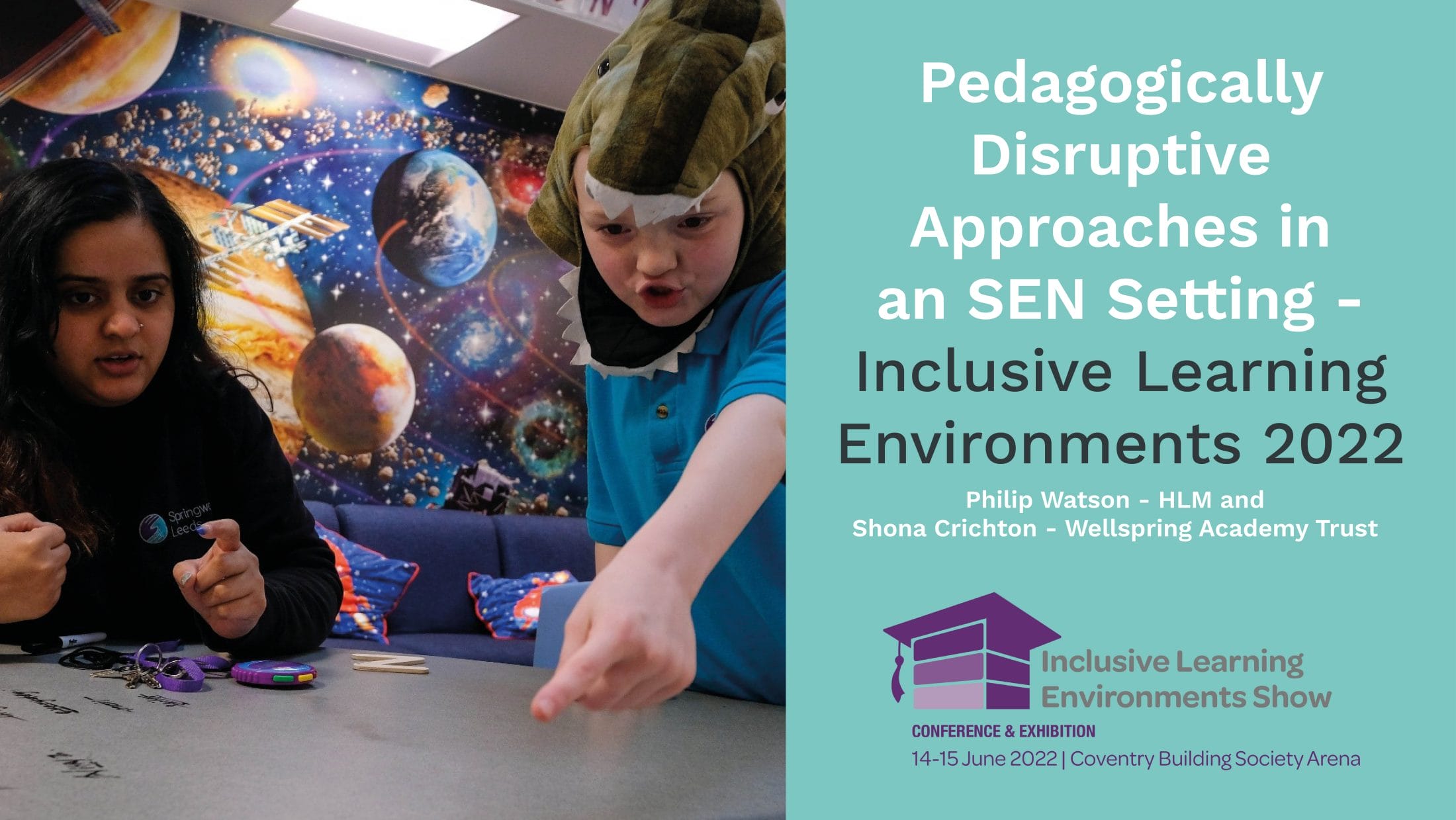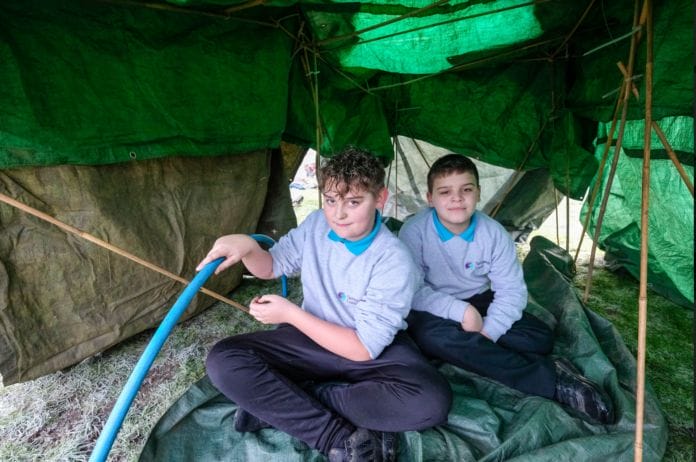
At the Inclusive Environments show 2022, Director – Head of Design and Education Board Sponsor, Philip Watson, from HLM Architects and Shona Crichton, Associate Principal from Wellspring Academy Trust, spoke about the journey that Springwell’s SEMH (Social Emotional Mental Health) schools have taken over the last fifteen years to create learning environments that support disruptive pedagogies.
“The lesson learned over fifteen years is that radical pedagogies such as Wellsprings need to be supported through radical learning environments. Special needs pupils need special settings.”
The Wellspring Academy Trust provides school facilities for children and young people who exhibit various forms of SEMH, and have subsequently had previous difficulties adapting within a mainstream school setting. This includes those that: have been excluded form previous schools; who can show aggression; who have experienced trauma; and those who have had diagnoses for autism. This wide range of children have one thing in common – unmet needs. The Trust seeks to provide for these needs by acknowledging sensory processing issues, and developing inclusive environments which alleviate these, in which every pupil can thrive.
The prototype project begun under Barnsley BSF in 2007 was for Springwell Learning Community. For this extensive research and consultation was required to fully understand the complexities of the brief. The combined design and education team identified the need for spaces that are calming, familiar and feel like ‘home’, where children can learn empathy and self-regulation in a safe, nurturing environment, which sadly are often not provided in their home life. In contrast to this, spaces which encourage children to express themselves, access emotional intelligence and grow through kinaesthetic learning – including art, music, dance and physical activity – were also required.
Accessibility of a variety of spaces was paramount in the school layout; spatially open, and well-lit spaces with access to outside areas ensure that children having difficult spells know there is an option to ‘escape’ from a particular indoor setting if they are feeling anxious or troubled. This manifested in the design with the addition of inner courtyards which also serve physiological needs through access to nature, fresh air and daylight. Another key component of the design was the provision of generous circulation spaces which help reduce stress in transitioning between different areas of the school.
Wellspring’s approach to providing an SEMH environment is founded on beliefs that children need to be cared for at all times, and that challenging behaviour is a communication of need. Springwell Barnsley and subsequent Academies in the Trust therefore seek to provide fully inclusive, calming and welcoming environments with the ‘wow’ factor; a place where children can be children, feel nurtured and have the full support that they need as individuals to equip them with the best foundation for later life. As Wellspring Principal Dave Whittaker describes, ‘We batter them with kindness’. This begins with the pupil arrival where the senior leadership team meet and greet every pupil who is then taken to their ‘homebase’. This sets the tone for the day and the scene for relationships to build.

Creating homebases was central to the design ethos, a place where pupils arrive and staff provide a welcome breakfast, which both gives pupils continuity of routine, and promotes socialization. The provision of this space, which encourages interaction in an informal setting, is fundamental to teaching relationship building to pupils by allowing them the opportunity to open up conversations which they might not be able to outside school.
Classroom design in this setting required the team to invert their typical approach of creating spaces where everything and everywhere can be seen – providing for non-neurotypical children meant integrating smaller areas and ‘nooks’ for those needing reflection or quiet time, based on the idea that smaller spaces can make emotions smaller. To this end, classrooms were not designed in the traditionally rectangular way, but rather adopted a radical approach with non-standardized teaching spaces that can be adapted to fulfil the Community’s approach to ‘teach the way [children] learn’.
Central to all Wellspring SEMH schools is a large flexible hall or ‘heart space’. These spaces are used for a multitude of purposes and are assets that each school utilizes fully. This is where the whole learning community can come together, where parents and carers can witness the progress that pupils are making through performances – where kinaesthetic learning transforms into confidence boosting experiences. Careers fairs, fashion shows, concerts, lectures, and theatre are just some of the uses that these spaces accommodate. The location, at the very centre of the school, reinforces the idea of a heart of the building where the community can come together.
HLM are currently working with Wellspring to learn lessons from Springwell in Barnsley and Wellspring’s subsequent new build projects in Leeds and Lincolnshire to ensure that their new schools are benefitting from a contiguous relationship with designer. The commitment of the Trust to equip vulnerable children with the right environment to develop and thrive has resulted in opportunities for children and young people, many of whom have gone on to achieve GCSE’s, and in some cases, even university, which was previously unheard of for pupils with an SEMH background. The lesson learned over fifteen years is that radical pedagogies such as Wellspring’s need to be supported through radical learning environments with continuous assessment of what works, and what doesn’t. Special needs pupils need special settings.


